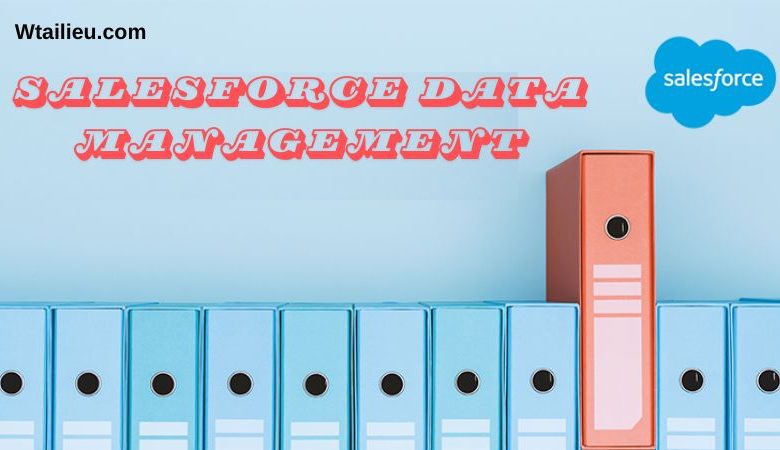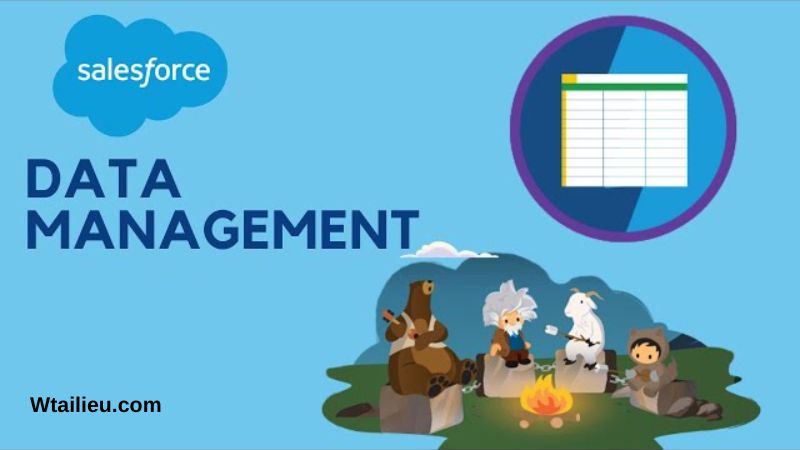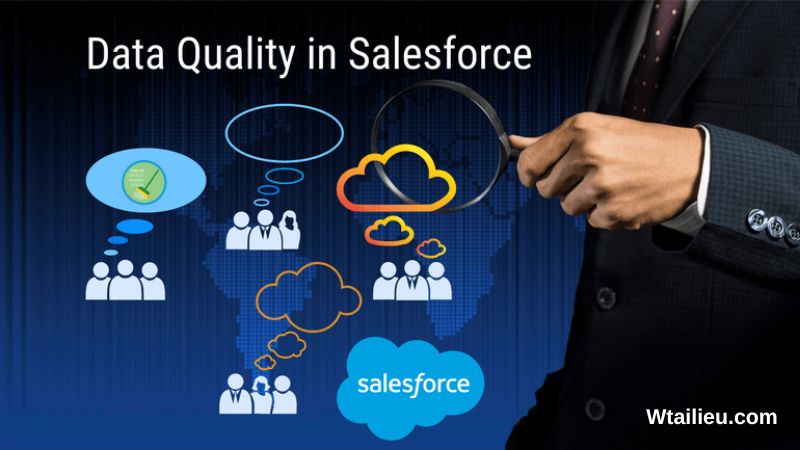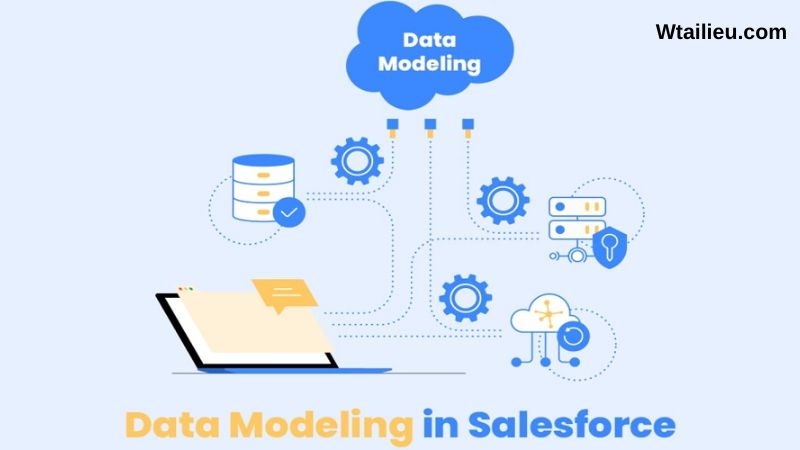
In the digital age, data reigns supreme, serving as the lifeblood of businesses worldwide. Salesforce, a leading customer relationship management (CRM) platform, empowers organizations to harness the power of their data effectively. However, achieving success with Salesforce requires meticulous attention to Salesforce data management practices. With Wtailieu discover right now.
Salesforce Data Management
Salesforce data management encompasses a broad spectrum of activities aimed at optimizing data accuracy, security, and accessibility within the platform. From import and export processes to data quality assurance and governance, mastering Salesforce data management is paramount for driving business growth and enhancing customer experiences.

Data Import and Export
The journey of Salesforce data management often begins with data import and export operations. Salesforce offers robust tools and utilities to facilitate seamless data migration into and out of the platform. Organizations can leverage data import wizards, Data Loader, or third-party integration solutions to efficiently transfer data between Salesforce and external systems.
Data export capabilities enable organizations to extract data from Salesforce for various purposes, including reporting, analysis, and integration with other business applications. By mastering data import and export processes, businesses can ensure that Salesforce remains synchronized with their broader data ecosystem.
Data Quality Assurance
Maintaining data quality is a cornerstone of effective Salesforce data management. Poor data quality can lead to inaccurate reporting, diminished user trust, and compromised decision-making processes. To mitigate these risks, organizations must implement robust data quality assurance measures.

Salesforce provides tools and features to enforce data integrity, including validation rules, data cleansing, and deduplication functionalities. By defining validation rules and implementing data cleansing strategies, organizations can ensure that Salesforce data remains accurate, complete, and consistent.
Data Security
Security is paramount in Salesforce data management, particularly concerning sensitive customer information and proprietary business data. Salesforce offers a comprehensive suite of security features to protect data at multiple levels, including user access controls, encryption, and auditing capabilities.
By configuring user permissions, roles, and profiles, organizations can enforce granular access controls to safeguard sensitive data from unauthorized access. Additionally, encryption mechanisms ensure that data remains encrypted both at rest and in transit, minimizing the risk of data breaches and unauthorized disclosures.
Data Model Design
A well-designed data model is the foundation of effective Salesforce data management. Organizations must carefully structure their data architecture, defining objects, fields, and relationships that align with their business processes and reporting requirements.

Salesforce offers flexibility in data modeling, allowing organizations to customize their data schemas to suit their unique needs. By following data modeling best practices and leveraging features such as custom objects, fields, and relationships, organizations can create a coherent and scalable data model that supports their evolving business needs.
Data Governance
Establishing robust data governance practices is essential for ensuring compliance with regulatory requirements and maintaining data quality and integrity. Salesforce data management encompasses the implementation of data governance policies, procedures, and controls to govern data usage, access, and lifecycle management.
By defining data governance roles and responsibilities, organizations can establish clear accountability for data stewardship and compliance. Additionally, implementing data governance frameworks enables organizations to enforce data standards, monitor data quality metrics, and mitigate risks associated with data misuse or unauthorized access.
Integration
Integration plays a pivotal role in Salesforce data management, enabling seamless data exchange between Salesforce and other business systems. Salesforce offers a range of integration solutions, including Salesforce Connect, APIs, and middleware platforms, to facilitate real-time data synchronization and process automation.
By integrating Salesforce with other systems such as ERP, marketing automation, or customer service platforms, organizations can streamline business processes, eliminate data silos, and provide a unified view of customer data across the enterprise. Effective integration enhances data accessibility and empowers organizations to leverage the full potential of their Salesforce investment.
Data Backup and Recovery
Data backup and recovery are critical components of Salesforce data management, ensuring data resilience and continuity in the face of unforeseen events such as system failures, data corruption, or cyberattacks. Salesforce offers built-in backup tools and utilities, including weekly data exports and metadata backups, to enable organizations to safeguard their data.
Additionally, organizations can leverage third-party backup solutions to implement more robust data protection strategies, including incremental backups, point-in-time recovery, and cross-org replication. By proactively backing up Salesforce data and implementing disaster recovery plans, organizations can minimize downtime and mitigate the impact of data loss incidents.
Data Migration
Data migration is a common challenge in Salesforce data management, particularly when consolidating multiple Salesforce orgs or migrating data from legacy systems. Successful data migration requires careful planning, execution, and validation to ensure a seamless transition without disrupting business operations.
By following best practices such as data mapping, data cleansing, and data validation, organizations can mitigate risks associated with data migration and ensure the accuracy and integrity of migrated data. Additionally, leveraging data migration tools and automation accelerates the migration process while minimizing manual errors.
Final Thought
In conclusion, mastering Salesforce data management is essential for organizations seeking to unlock the full potential of their Salesforce investment. By implementing best practices in data import and export, data quality assurance, data security, data model design, data governance, integration, data backup and recovery, and data migration, organizations can optimize data utilization, enhance decision-making processes, and drive business success in the digital era.
Conclusion: So above is the Mastering Salesforce Data Management: Best Practices for Success article. Hopefully with this article you can help you in life, always follow and read our good articles on the website: W Tài Liệu
Related Articles
Verizon Updates Its Unlimited Plans, Though Perks Will Cost Extra
What Degree Do I Need to Become a Data Analyst?
How Data Center Colocation Works
-
Does Verizon Throttle Your Internet? Here’s The TruthOctober 17, 2023
